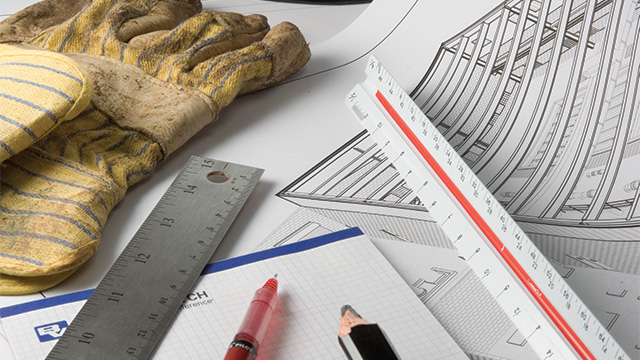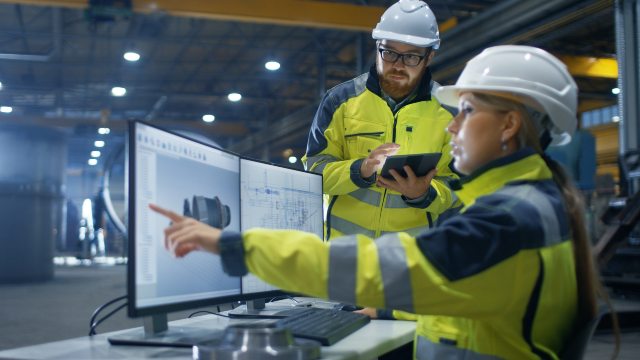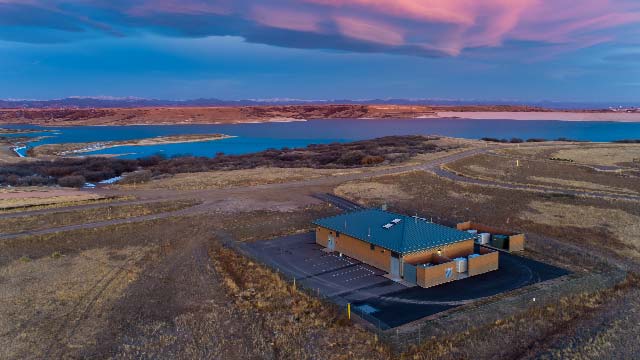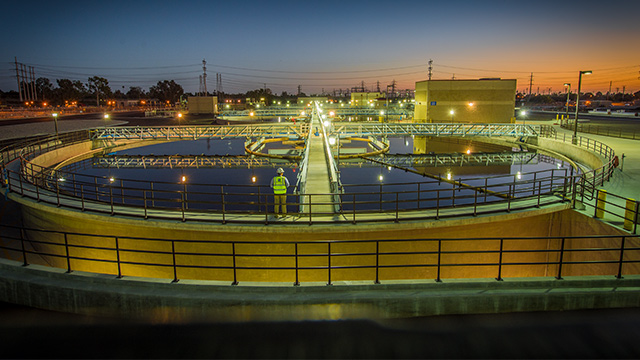Once the realm of video games, Virtual Reality (VR) is increasingly integrated into projects and client workshops at Black & Veatch, with promising outcomes. VR may soon become the next essential tool in the modern workplace. “VR provides invaluable services in all sorts of fields, but particularly in terms of designing complex infrastructure projects,” says Brian Melton, Technology Innovation Lead in Engineering and Development Services. Just as 3D modeling and BIM (Building Information Modeling) have advanced our ability to design and coordinate projects at the next level – surpassing 2D drawings that were industry standard until two decades ago – VR enables a fully immersive experience, improving certainty and reducing risk.
Recent advancements in VR have increased the value and simplified user experience with affordable headset devices that are wireless and no longer require a PC. New VR software includes real-time data publishing, where a change made in BIM or other 3D models can be updated nearly instantly to the virtual environment. In older VR versions, this process was difficult, limiting its use-value in design. New systems also have improved capability for users to offer real-time feedback on layout, safety, and accessibility when virtually “touring” a modeled environment, such as the headworks for a wastewater treatment facility.
Recently, VR capability brought success to a team of 12 staff members at Johnson County Wastewater Treatment Plant. The Nelson Wastewater Treatment Facility Project Team hosted a VR Day, allowing the future facilities’ operations and maintenance staff to conduct a virtual tour and collect invaluable feedback before finalizing the design on the facility’s expansion. As Gary Long, Facility Superintendent, stated, “Our team of maintenance staff enjoyed using the tool. It was easy to use. We liked being able to see any possible issues with maintenance tasks because then we could highlight those for the engineering team before construction.”
VR is already advancing how project teams can engage with clients in design reviews, improving feedback on safety and accessibility. VR training is an untapped area and could be offered to help clients improve their ability to onboard and train new staff for operations and maintenance positions. Within the AEC space, Melton anticipates that VR will become an essential part of risk-mitigation during design, because being virtually present in a yet-to-be-constructed space will allow project teams to clearly identify risks, hazards, coordination concerns, and ADA compliance issues before the construction stage.
Adoption of VR in AEC spaces
Conceptually, the link between VR and engineering design has been clear since VR’s inception: a designer or a client can move around in a yet-to-be-built digital space with their bodies, experiencing the scale of the space, size of equipment, relative distances, and arrangement of objects. Put simply, a person engages with a physical room differently than a drawing of a room. Particularly in the case of safety assessments, the hazards become clear when experiencing a virtual space. A missing handrail or misplaced railing, for instance, can trigger instinctual caution rather than a calculated response on paper.
One memorable VR training involved a warehouse inspection that allowed users to walk around the space and identify issues or concerns. The program kept the user’s score while he or she interacted with the environment. Gamifying the training experience made it more enjoyable and engaging, and users shared that they retained more knowledge after the session as compared to traditional training methods.
While the initial buzz around VR was concentrated in gaming, the AEC community was one of the first industries to recognize VR as central to design and engineering processes. Engineering and construction firms like Black & Veatch are increasingly engaging with VR’s usefulness in this way. By improving the engineering team’s ability to simultaneously review and comment by touching an object in real-time inside the VR space, VR technology offers evident benefits to engineers and clients alike throughout the lifecycle of the project.
“Just as we can’t imagine work without dual monitor workstations,” Melton offers, “there may come a time when we can’t imagine certain design processes without VR.”








